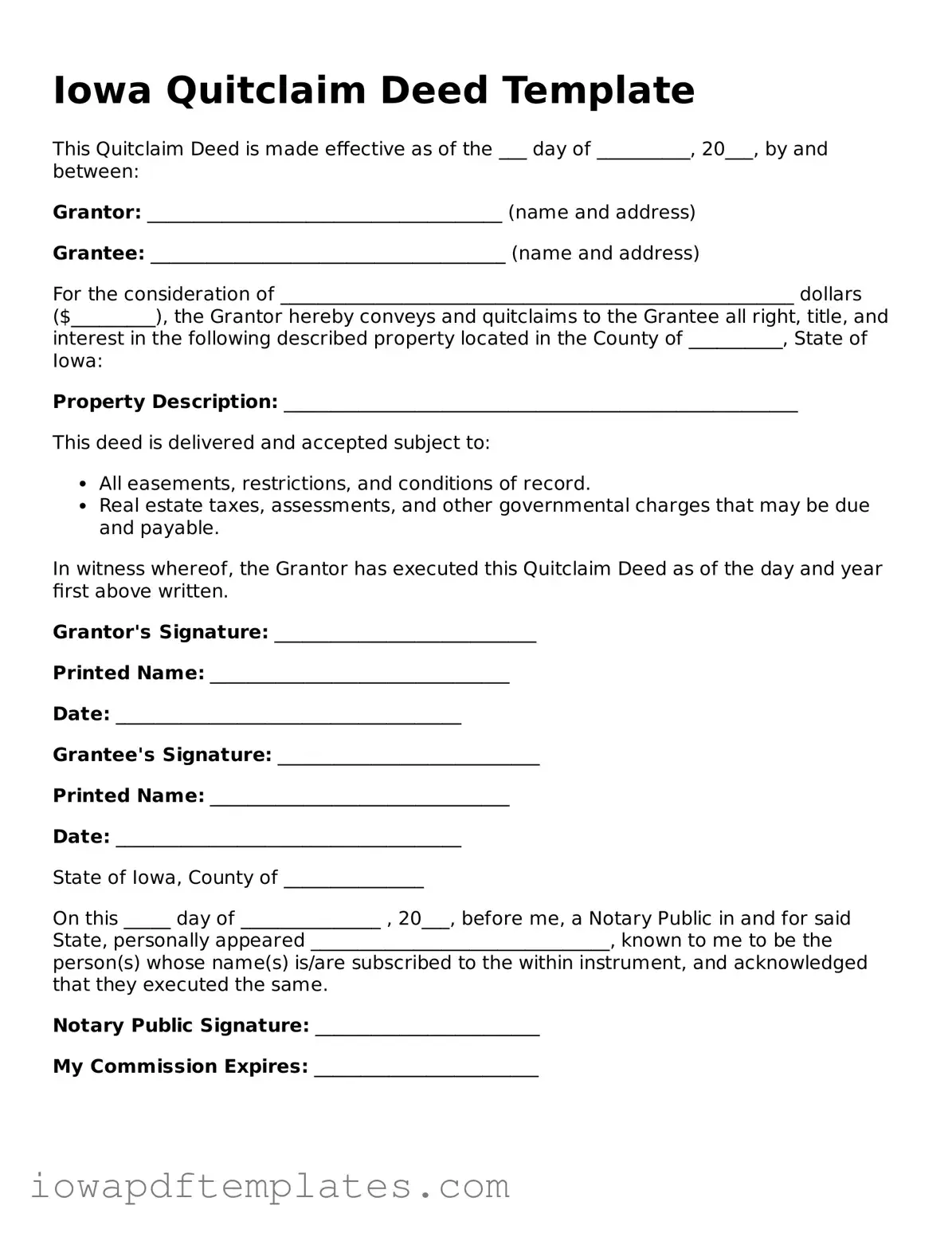Iowa Quitclaim Deed Template
This Quitclaim Deed is made effective as of the ___ day of __________, 20___, by and between:
Grantor: ______________________________________ (name and address)
Grantee: ______________________________________ (name and address)
For the consideration of _______________________________________________________ dollars ($_________), the Grantor hereby conveys and quitclaims to the Grantee all right, title, and interest in the following described property located in the County of __________, State of Iowa:
Property Description: _______________________________________________________
This deed is delivered and accepted subject to:
- All easements, restrictions, and conditions of record.
- Real estate taxes, assessments, and other governmental charges that may be due and payable.
In witness whereof, the Grantor has executed this Quitclaim Deed as of the day and year first above written.
Grantor's Signature: ____________________________
Printed Name: ________________________________
Date: _____________________________________
Grantee's Signature: ____________________________
Printed Name: ________________________________
Date: _____________________________________
State of Iowa, County of _______________
On this _____ day of _______________ , 20___, before me, a Notary Public in and for said State, personally appeared ________________________________, known to me to be the person(s) whose name(s) is/are subscribed to the within instrument, and acknowledged that they executed the same.
Notary Public Signature: ________________________
My Commission Expires: ________________________
